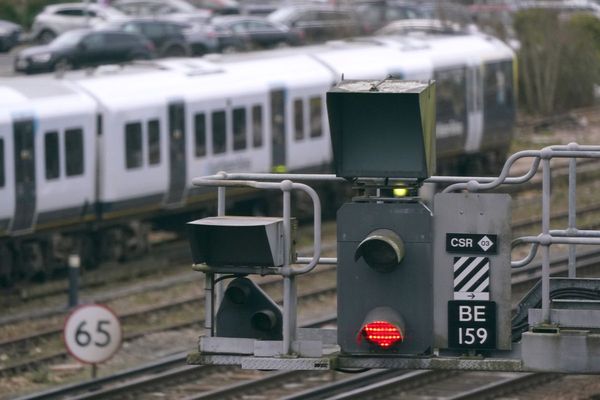
In October, the Treaty on the Prohibition of Nuclear Weapons, an international ban on nuclear weapons with 86 state signatories, received its 50th ratification by a state signatory. As a result, and despite U.S. attempts to scuttle the treaty, it will enter into force as legally binding international law in January 2021. It is unlikely that U.S. President-elect Joe Biden will sign the treaty or reduce his country’s nuclear arsenal substantially during his presidency. Still, his administration is likely to reverse some of President Donald Trump’s nuclear weapons policies and could promote significant nuclear nonproliferation measures. Like the leadership of all nuclear-armed states, Biden’s administration will face continued pressure to sign the treaty and deeply engage in nuclear disarmament.
The 2017 international agreement bans the development, testing, use, or threat of use of nuclear weapons. It also prohibits the possession of nuclear weapons. The treaty was spearheaded by non-nuclear-armed states, survivors of the atomic bombings of Hiroshima and Nagasaki and nuclear weapons testing, and nongovernmental organizations, including the International Campaign to Abolish Nuclear Weapons, which won the 2017 Nobel Peace Prize. The nine nuclear-armed states—China, France, India, Israel, North Korea, Pakistan, Russia, the United Kingdom, and the United States—boycotted the 2017 treaty negotiations, oppose the treaty, and have not signed it.
Earlier this year, as the Treaty on the Prohibition of Nuclear Weapons edged closer to entering into force, the Trump administration urged states that had ratified the treaty to withdraw their ratifications—an effort that did not work but was in keeping with long-standing U.S. views that nuclear weapons enhance U.S. security and that of its key allies.
Had Biden been president at the time, he might well have done the same. Like his predecessors, Biden is a proponent of nuclear deterrence. As vice president in 2017, he referred to it as “the bedrock of [U.S.] national defense,” and a statement on his campaign website affirmed that “the sole purpose of the U.S. nuclear arsenal should be deterring—and if necessary, retaliating against—a nuclear attack.” Once in office, it is likely that Biden will continue Trump’s policy of opposing the new treaty.
Yet, the arguments mounted in favor of nuclear deterrence are deeply flawed. As the nuclear weapons specialist Benoît Pelopidas has highlighted, nuclear weapons have not deterred war between nuclear-armed states or maintained international peace. China and Russia engaged in a border clash in the late 1960s, and India and Pakistan were engaged in direct conflict over disputed territory in the 1990s. Nuclear weapons did not keep the Cold War “cold”; tensions played out via proxy wars in the global south resulting in the deaths of millions of civilians, and nuclear war almost broke out between the United States and Soviet Union during the 1962 Cuban missile crisis. Furthermore, historians of nuclear weapons have argued that during the early Cold War, nuclear weapons contributed to an escalation in tensions between nuclear-armed states.
Not only are nuclear weapons of dubious value for deterrence, they also present immense threats to human health and the environment. The U.S. bombings of Hiroshima and Nagasaki in August 1945 resulted in the deaths of an estimated 230,000 people from radiation sickness, burns, and injuries. The radiation also increased risk of illnesses over the long term, created ongoing psychological trauma, and led to discrimination against survivors. Since 1945, nuclear tests conducted by the United States in the Marshall Islands and in Nevada in areas with large Native American populations, by France in Algeria and French Polynesia, by the Soviet Union in Kazakhstan, by the United Kingdom in Australia in areas with sizable Indigenous populations, and by China in Xinjiang have also resulted in marginalized populations facing high rates of cancer and birth defects, and the contamination of their environments. Overall, since 1945, atmospheric nuclear testing has resulted in at least 2 million global cancer deaths.
That is why the Treaty on the Prohibition of Nuclear Weapons is necessary on top of other measures like the 1968 Treaty on the Non-Proliferation of Nuclear Weapons, a key piece of international nuclear law, which many states have largely failed to adhere to. The treaty allowed the United States, United Kingdom, France, China, and the Soviet Union, then the only nuclear-armed powers, to maintain their existing arsenals and banned all other states from acquiring them. Despite this, India, Pakistan, North Korea, and Israel developed and maintain nuclear weapons. The treaty also required nuclear-armed states that are signatories to work toward nuclear disarmament, which the United States, United Kingdom, China, Russia, and France have largely not done, as they all continue to retain and modernize their nuclear arsenals, notably by developing nuclear warheads and nuclear-armed drones, and increasing the lethality of existing nuclear weapons. The new treaty would address the limitations of the earlier one by banning nuclear weapons outright, and for all states.
Regardless of nuclear-armed states’ policies regarding the new treaty, the agreement is significant, as it considerably strengthens the body of international nuclear law, the norm of nuclear nonproliferation, and, crucially, as disarmament law specialist Anna Hood has argued, contributes to the delegitimization and stigmatization of all nuclear weapons regardless of which states possess them. Importantly, increasing support for the treaty and the abolition of nuclear weapons also increases pressure on nuclear-armed states to substantially and meaningfully engage in nuclear disarmament.
Although Biden is likely to continue to snub the Treaty on the Prohibition of Nuclear Weapons, it does not mean that U.S. nuclear weapons policy will adhere entirely to the Trumpian status quo. Like former U.S. Presidents Bill Clinton and Barack Obama, Biden has been a long-standing advocate for arms control, including the 1996 Comprehensive Nuclear-Test-Ban Treaty. The agreement bans all nuclear testing and was signed by Clinton, but it has still not been ratified by the Senate, a process that would require a two-thirds majority. Facing a similar blockage, it is highly likely that Biden would continue America’s bipartisan moratorium on nuclear testing, which began during George H.W. Bush’s presidency and was almost interrupted by the Trump administration contemplating resuming nuclear testing.
Biden has pledged a five-year extension of the New Strategic Arms Reduction Treaty (New START) between the United States and Russia, which caps the number of deployed nuclear weapons by both states to 1,550. New START is the only remaining arms control treaty between the two states. In 2019, Trump withdrew the United States from the Intermediate-Range Nuclear Forces Treaty, an arms control agreement signed by U.S. President Ronald Reagan that banned U.S. and Russian possession of short- and medium-range nuclear missiles. The Trump administration and Russia’s President Vladimir Putin have not yet agreed to extend New START, which will otherwise expire in February 2021—the Trump administration has proposed only extending the treaty for one year.
During his presidential campaign, Biden did embrace a “no first use” policy, which renounces a first use of nuclear weapons and advocates for using such weapons only in response to a nuclear attack. If Biden did officially adopt “no first use,” it would be significant, as the U.S. president has sole authority to authorize the use of nuclear weapons. No previous U.S. administration has renounced first use. Meanwhile, globally, only India and China have.
Biden is not the first Democratic leader to contemplate adopting a “no first use” policy for the United States. Obama contemplated the policy but ultimately rejected it following opposition from hawkish Democrats in his administration. Although Biden will also face opposition from some Democrats, he will also likely be under pressure from progressive members of his party. For example, in 2019, Sen. Elizabeth Warren introduced the No First Use Act in the U.S. Senate, seeking to bar the United States from conducting a first strike.
Furthermore, later that year, Democratic congressional advocates for the abolition of nuclear weapons—Reps. James McGovern and Earl Blumenauer—introduced a resolution in the U.S. House of Representatives calling for the United States to adopt a “no first use” policy, embrace the Treaty on the Prohibition of Nuclear Weapons’ goal of eliminating all nuclear weapons, and cease modernizing its nuclear arsenal. As a result, Biden will likely also face pressure from some progressive Democrats to sign the new treaty and deeply engage in nuclear disarmament.
In his famous 2009 Prague speech, Obama asserted that the United States “will take concrete steps toward a world without nuclear weapons.” These steps—which were important, but small, under the Obama administration and virtually nonexistent during Trump’s presidency—will likely remain only incremental during Biden’s presidency.







